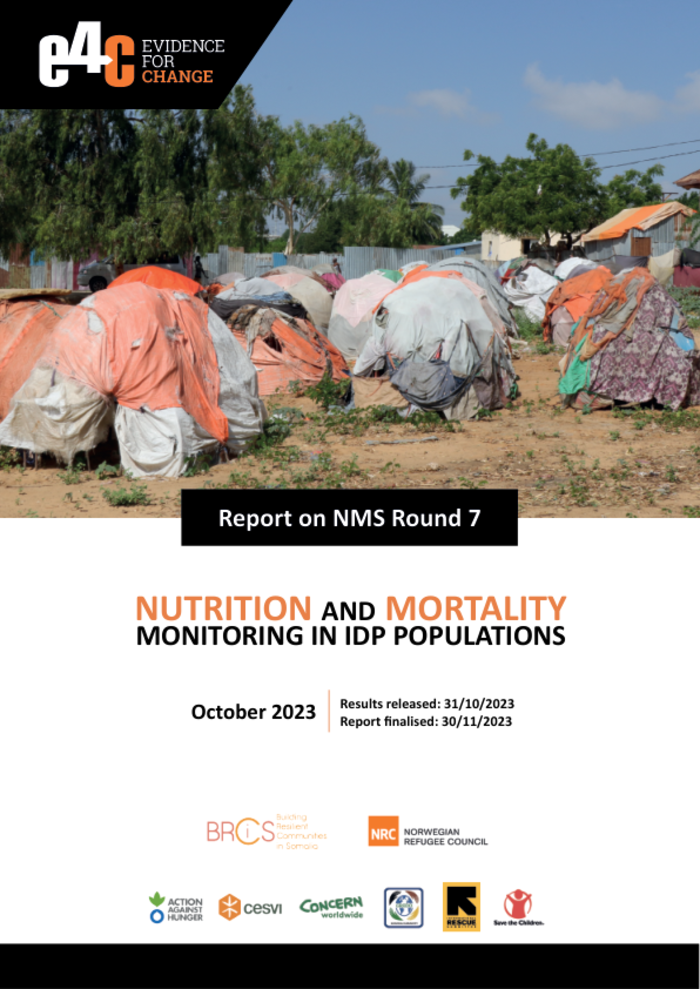
EXECUTIVE SUMMARY
This is the seventh report from the 2022/2023 Nutrition and Mortality Motioning System project. Data collection for this round was conducted and funded by the BRCS consortium. Between 19th September and 30th September, 2023, data was collected from 1,400 IDP households in 14 sites/camps in Khada and Daynille in the Afgooye Corridor, Baidoa, and Kismayo. Overall, there has been continued progress within the sentinel sites covered in Round 7, although the humanitarian response has still not achieved Sphere Standards in key interventions.
In Round 7 data collection we explored reasons for continued displacement. The median time since arrival within the 14 IDP sites/camps ranged from 14 months up to 23 months. An average of 38% of households, and 34% of the total population, had left the camps (out-migrated) since the first round of data collection took place. Of households that were remaining in the camps, 29% reported that at least one member had left to return to their area of origin. Reasons given for remaining in the camps included both push and pull factors. Push factors such as loss of livestock/crops and ongoing conflict were reported more frequently than pull factors such as better services and employment opportunities in the IDP sites.
Households reporting the use of water from tankers has continued to drop, except in Baidoa, where this rise increased. Tankers also remained an important water source in Kismayo. In Khada, all the household included in round 7 had access to public taps, or handpumps, and there was increased use of wells or springs in Daynille. The household experience of drinking water adequacy has improved in all areas although about 1 in 3 households are still sometimes experiencing inadequate drinking water in Baidoa and Kismayo. Open defecation in the field was reported by some households in all areas, although the situation has generally improved since round S. It remains a significant issue in Baidoa and Kismayo.
The trend in GAM by MUAC prevalence indicates that, overall, an improving nutritional situation is continuing, although the prevalence is showing a slow upward trend in Baidoa. In all areas the prevalence is now <10% and in 2 areas it is 90% was only achieved in one area for MAM and the combined coverage for both MAM and SAM treatment remains below standard.
Possession of a child health record card had improved since Round S and health record cards are now observed for 58% of all children. However, this is still low and will continue to impede the effective delivery and monitoring of child health and nutrition services. Measles vaccination coverage has continued to improve and the combined coverage is 72%. However, as coverage in 3 out of the 4 areas lies below 90%, there is still a need for further strengthening of routine vaccination services. Cholera vaccination coverage increased and overall coverage on children aged 12-59 mo. is now 62%. There was a continuing downwards trend in cases of measles and AWD.
Crude and under death rates remined stable and well below emergency thresholds.
